Dan Meyer Sugar Packets and Proportions – A 3 Act Math Task
After spending three days working with my 8th graders on a road trip project, I needed a one-day activity that was fun, interactive, and tied to the 8th grade Oklahoma math standards.
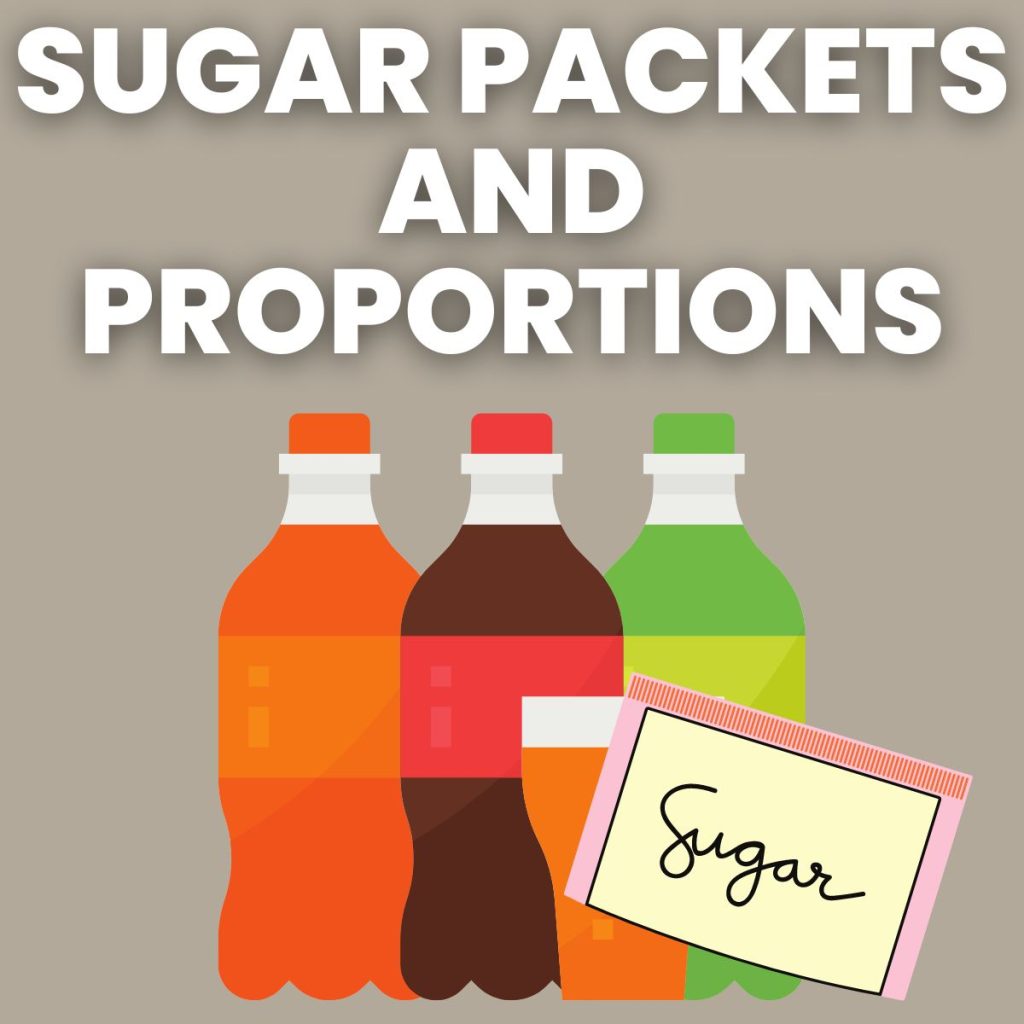
Looking for inspiration, I turned to the Internet where I soon found a link to Dan Meyer’s Three-Act Math Tasks via Pinterest.
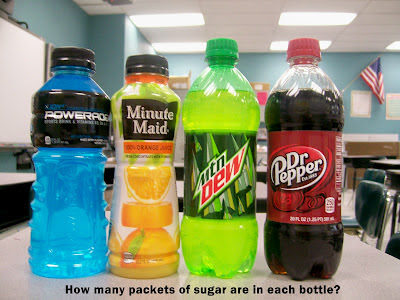
While I have been following his blog for years, I had never actually tried out any of his ideas in a classroom. This was mainly because I hadn’t had a classroom of my own. I was just a college student reading math teacher blogs.
My students still needed some more practice with proportions, so I decided to go with the Sugar Packets video. I watched the videos several times. I thought about what questions I would ask.
I thought about how students would respond to the videos. I came up with a creative way to expand this idea into a 50-minute lesson.
Next, I started trying to talk myself out of the idea. I started thinking about all the things that could go terribly wrong. What if the students could tell me what information they needed?
What if the class isn’t engaged by the video? What if this lesson totally flops?
And, I probably would have succeeded in talking myself out of this lesson if I had any other idea of what to do the next day. But, it was my last lesson plan for my student teaching, and I was out of inspiration.
So, I went with it, and I am so glad I did.
Dan Meyer Sugar Packets and Proportions Lesson
1. I began the lesson by having students brainstorm various professions and activities that would involve ratios and proportions. We had just used proportions to plan a road trip, and I wanted students to realize that the math we have been learning has real-world application.
2. Show the video. (Act One) The students gasped in horror at the fact that the man was eating sugar packets. One student asked, “Did he die after that?” This video did a really good job of grabbing my students’ attention.
3. Have students write down guesses. It was interesting to walk around the room and read the students’ guesses. Over the course of the day, guesses ranged from 3 to 200 packets of sugar. I also had students write down guesses that they knew were too high or too low.
These were interesting, but I’m not sure I fully understand what types of responses I should have been looking for.
4. Next, I asked students what information they would need to solve the problem. Originally, many students wanted to use the fact that the bottle was 20 ounces.
But, soon, through discussion, the students arrived at the fact that we needed to know how much sugar was in each packet and how much sugar was in the bottle.
After providing pictures of the nutrition labels, the students were able to set up proportions and solve for the correct number of packets.
5. Show the un-edited video. (Act Three) I had some pretty excited students when they realized that they had used math to get the correct answer.
6. After the video reveal, I had students form 4 groups. I told them that I had gone on a shopping adventure and brought my purchases with me to class. As a group, they were asked to rank the beverages from least to greatest based on their sugar content.
7. Each group was given one bottle to start out with. Using the fact that there are 4 grams of sugar in 1 sugar packet and the nutritional information on the back of the bottle, each group solved for the number of sugar packets in the bottle.
Though I wanted them working in groups so they could talk about how to solve the problem, I wanted to make sure each student was solving each problem.
Each student was responsible for having a proportion and work on their paper for each bottle. As the class period progressed, the bottles circulated the room.
8. Another 8th grade math standard is choosing appropriate data displays. After each group had calculated the amount of sugar packets in each of the four bottles, they had to discuss what the most appropriate data display would be for this data.
Then, each student had to create a graph of the data to show how many sugar packets were in each beverage.
This led to some interesting conversations with students. “Can we make a circle graph?” “Will a line graph work?” “My group made a histogram.”
I was hoping that there would be more discussion/debate within the groups on which type of graph they should choose.
Instead, I found myself asking students questions to guide them to the correct graphs. This is definitely an area I need to work on.
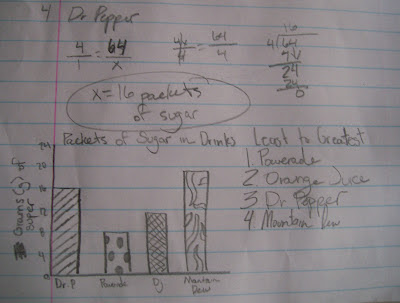
9. Based on the amount of time left in the class period, I presented students with some of my other purchases. We estimated the number of sugar packets in each food. Then, we set up a proportion to solve for the actual amount of sugar packets.
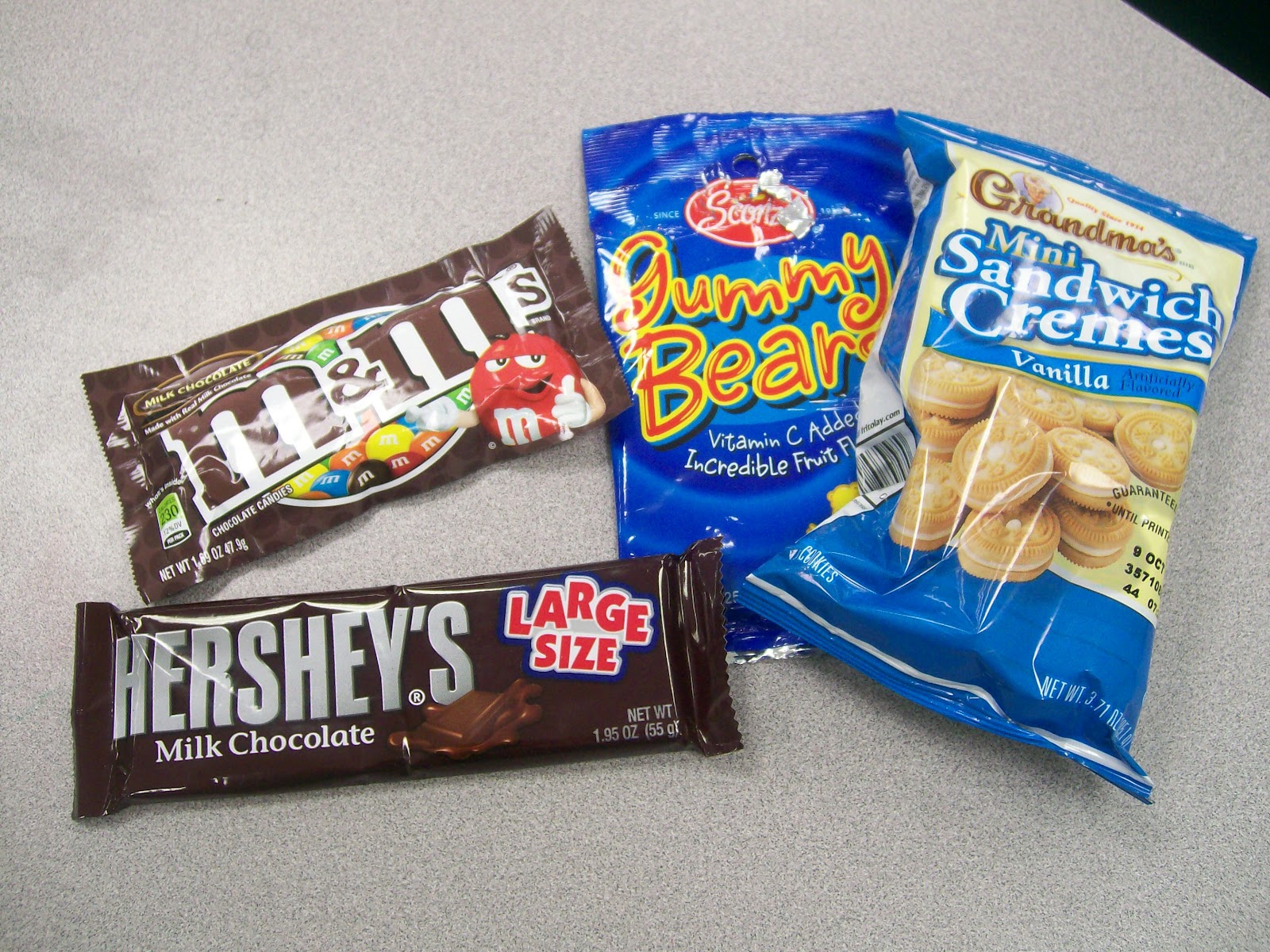
Overall, it was a very enjoyable lesson. The students were engaged by it. For once, they didn’t complain about having to solve proportions. I enjoyed the process of helping students to discover a method to solve a real-world problem.
It definitely stretched me as a teacher, and I’m looking forward to including more thought-provoking activities and questions in my own classroom next year.

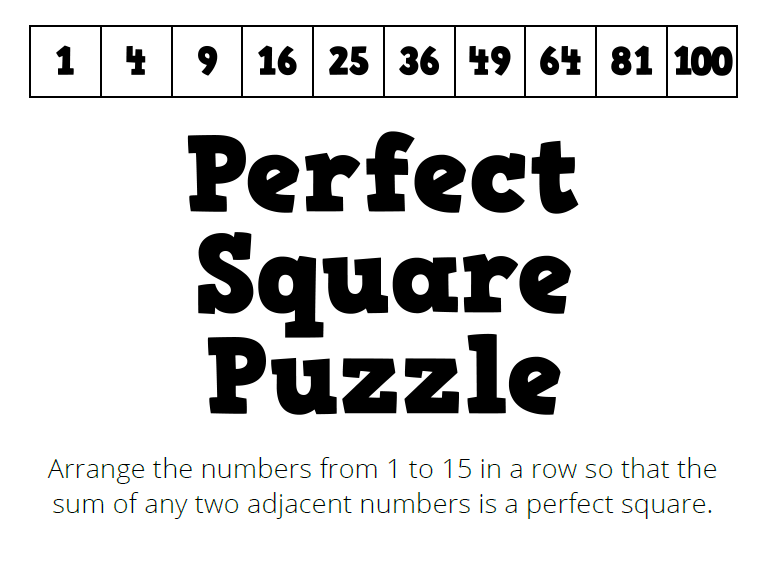

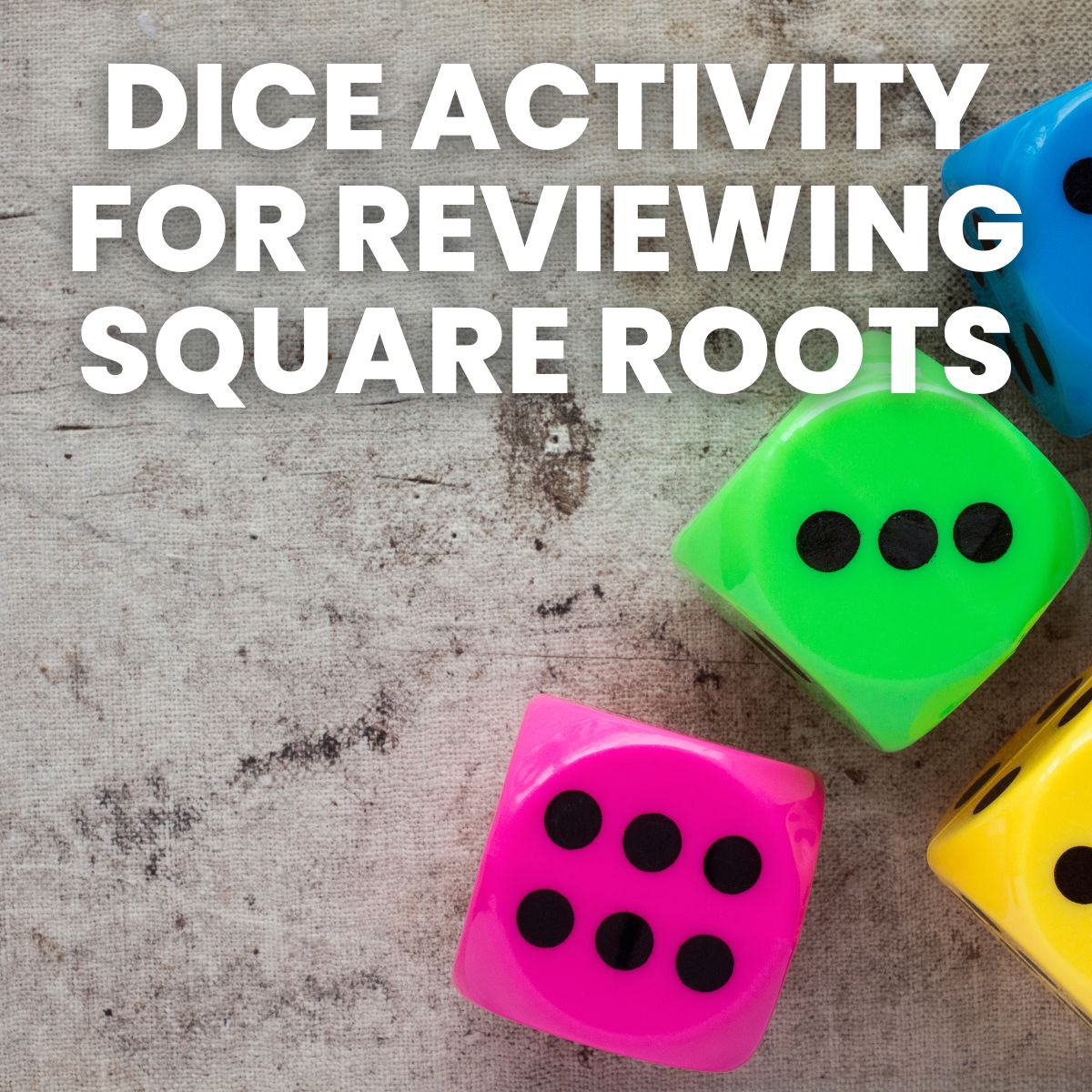
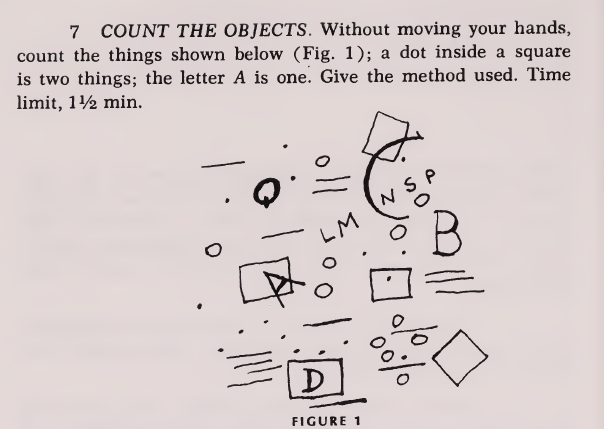
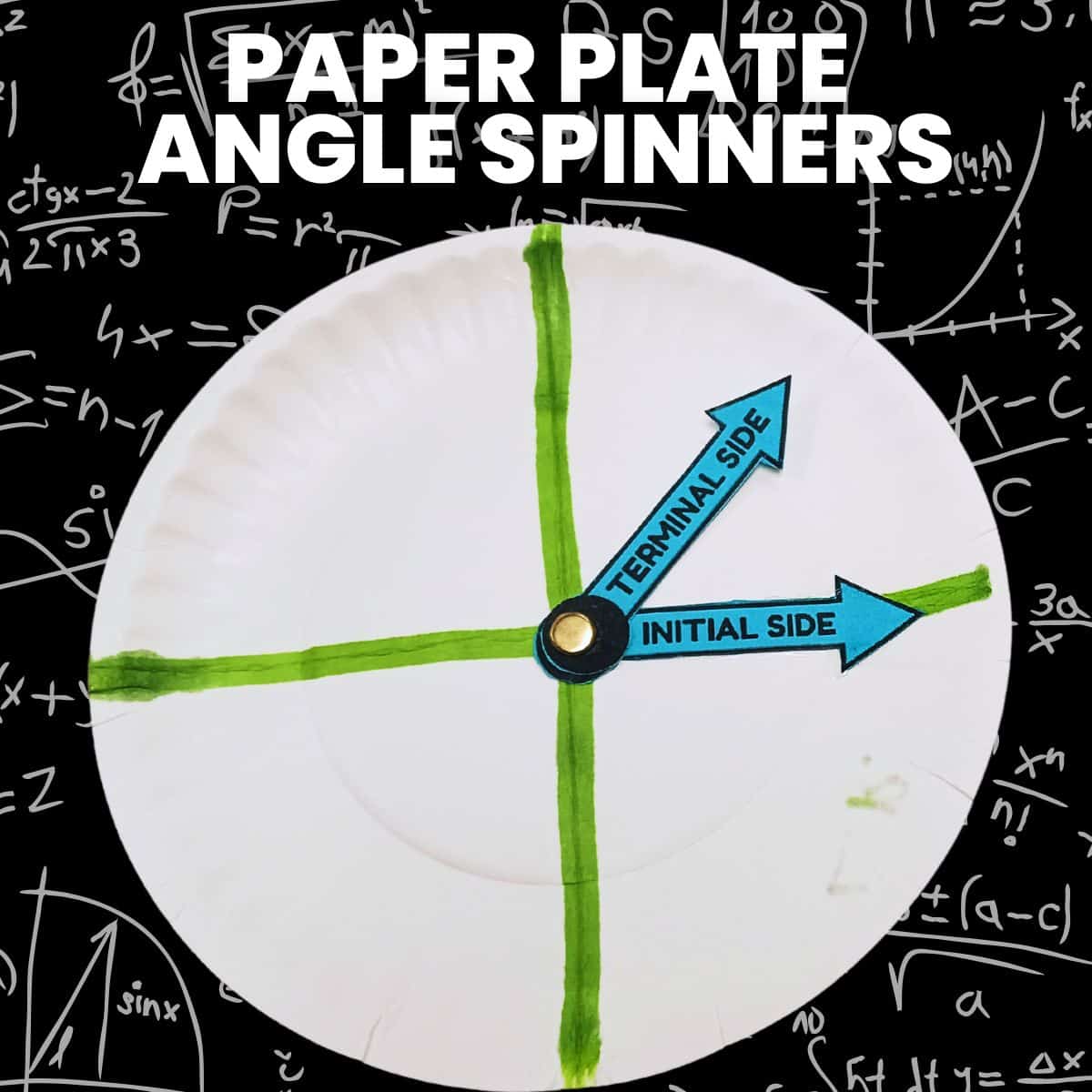
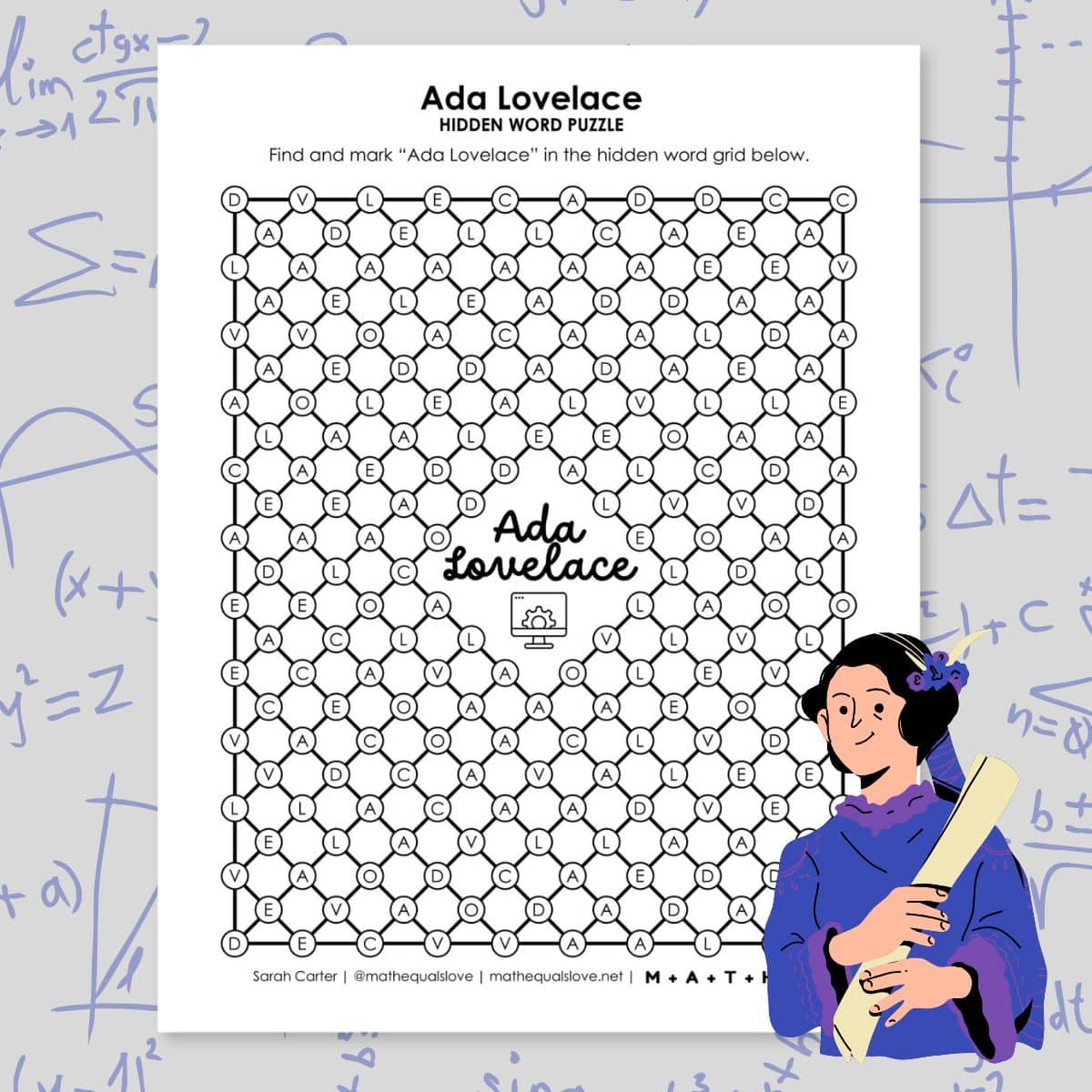
If I have time, I'd love to do this lesson with my Algebra 1 students. I tried watching the video but it's in quick time. Do you have another way to watch it?
Sorry my response is so late. I don't know of another way of watching the video, but I wish I did. I wanted to show this to my current students, but our computers won't allow us to watch this type of video either.
You can find it on youtube! That's what I plan to use.
I can't wait to try this with my accelerated math kids! It looks like a great activity that my kids will really enjoy.
This is a really late comment, but there is a program called handbrake that is a free open source program. If you can download the video to your home computer, you can then handbrake it to another format that you can view on your school computers. I also highly recommend VLC media player (another open source program). It will play most videos regardless of their format (if you can get your technology support folks to install it on your school computers.) We've used it in our district for a couple of years now and it's great!
I've never heard of handbrake before. Thanks for letting me and others know about that! I will definitely look into that next time I have any problems. We use VLC media player at my school, too. I haven't had any problems with it at all.
Dan Meyer has updated his site and this page contains a video http://threeacts.mrmeyer.com/sugarpackets/ that is not quick time. He also has a link where you could download the lesson and videos, in VLC, as a zip file.
Awesome! Thanks for sharing!
Love this activity! Will do with students tomorrow 🙂 Thank you for sharing!
You're welcome!
Great ideas and thanks for sharing. I also had my students use the Coke bottle's nutritional facts to determine with percents and proportions how many grams of sugar the USDA finds acceptable for consumption in a single day. We then used proportions to convert this amount to pounds. Love that there are so many ways to go with this thing!
I will be using this as the basis for my mock lesson in the final round of my interviews for a 6th grade class. I like the extension of finding how much sugar this is compared to the USDA's acceptable limit. That could be a good extension activity.
I will be using this as the basis for my mock lesson in the final round of my interviews for a 6th grade class. I like the extension of finding how much sugar this is compared to the USDA's acceptable limit. That could be a good extension activity.
Very smart extension!
In regards to #3, I would add "An ounce (oz) of sugar is 28.3g and a sugar packet contains 4g of sugar. How many packets of sugar could fill a 20-oz jar?" as the first questions. Students could then give realistic limits. A 20oz container cannot hold more than (28.3/4)*20 or about 140 packets of sugar. Since the bottle isn't full of granulated sugar and Coke is mostly water, students should be able to determine they are choosing a number between 0 and 140. That should help with building a realistic skill instead of "here's a number, I'm done."